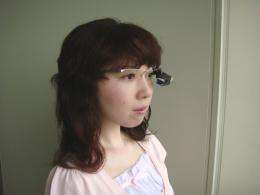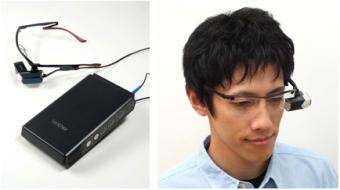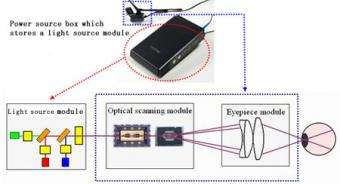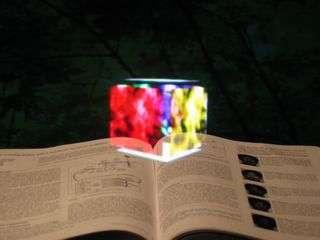NEC's "Tele Scouter"
(PhysOrg.com) -- NEC and Brother are both developing wearable prototype devices that use Retinal Imaging Display (RID) technology to project images directly on the wearer's retina. NEC's gadget is designed to interpret foreign languages and project a translation onto the retina, making it possible to have a conversation without an interpreter. Brother's device will project images of documents, allowing the wearer to read them in complete privacy.
NEC's prototype, the "Tele Scouter" consists of an eyeglass frame with a tiny projector and a microphone mounted on it. The microphone picks up the speech and transmits it to a small computer worn on the waist. The computer then converts the speech to text and translates it into the wearer's own language. A retinal display on the frame then projects the text directly into the wearer's peripheral vision. This allows the user to maintain eye contact with the other person even while reading the translation.
NEC says the device can be used for many hours without causing eye strain because the wearer does not need to focus on the text.
Brother's retinal imaging display
Brother's gadget is so far unnamed and consists of an eyepiece and optical scanner, and a power box that includes a light source comprising blue, red and green laser diodes. The device produces an image at 800 x 600 resolution, which appears to the viewer as an object about 10 cm square and one meter away.
How it works.
NEC's Tele Scouter is not yet capable of translating well enough for business users or travelers, but a version is expected to be released in 2010. This device will be for factory workers and shop employees and will display of information such as operating instructions and diagrams. It may find future application in video games and car navigation systems. Brother also expects to release its device next year.
Conceptual image of the visual field seen through the RID.
More information:
• NEC "Tele Scouter" page (in Japanese)
• Brother's press release and technical information
© 2009 PhysOrg.com























